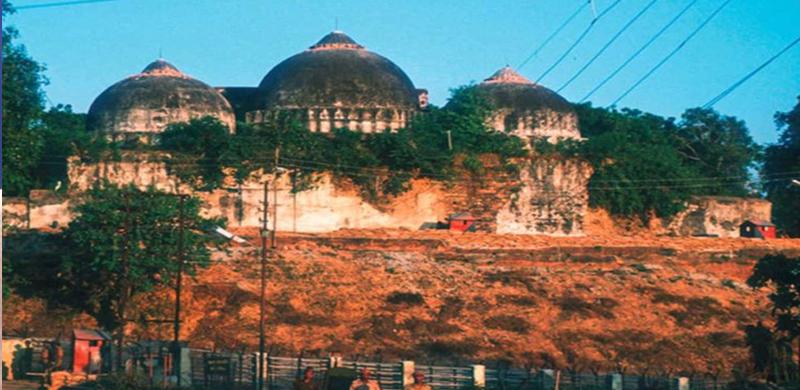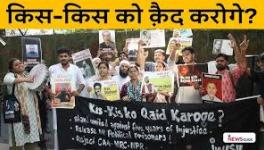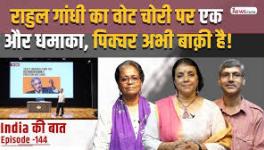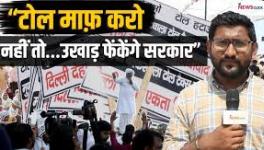Babri Demolition was Insult to Ambedkar, Muslims and Dalits

Twenty-eight years after the Babri Masjid was demolished on 6 December 1992, its anniversary this year throws a challenge to all those who observe it as the day of mourning, as Muslims have been doing for nearly three decades. They mourn not only the wanton destruction of their place of worship, but also the erosion of the principle of secularism enshrined in the Constitution. Their mourning was designed to remind the nation of the constitutional promises made to them, to fulfil those by rebuilding the mosque where it once stood in Ayodhya. For Muslims and many others, the 6 December anniversary was supposed to simultaneously work as a warning about the intent of the Rashtriya Swayamsevak Sangh and its affiliates to turn India into a Hindu nation-state.
In 2020, a compelling set of dates compete with 6 December for observing the day of mourning and warning. For instance, should not the day of mourning be observed on 9 November, on which day last year the Supreme Court gave the site of the Babri Masjid to Hindu litigants for building the Ram temple? The verdict requires to be mourned, as it was by legal luminaries. This is because the court said a temple was not destroyed to construct the Babri Masjid centuries ago—and yet handed over the disputed site in Ayodhya to Hindus.
Certainly, 6 December as the day of warning the nation about the RSS’s political project has lost all relevance. This fact became undeniable with 5 August on the calendar underlined in saffron. On this day, Prime Minister Narendra Modi laid the foundation stone for the Ram temple in Ayodhya. It symbolised the Indian state’s ideological shift—from being equidistant from all religions to demonstrating its affinity for the religion of the majority. There is no point in warning people about the process of turning India Hindu. It is plainly visible to them.
In the changing political milieu, it is hard to tell what to mourn—and who to warn against whom. Think of 30 September, on which day this year a court in Lucknow exonerated 32 people including Bharatiya Janata Party stalwarts like LK Advani, Murli Manohar Joshi, Uma Bharti and Kalyan Singh, who were accused of engaging in a conspiracy to demolish the Babri Masjid. Regardless of the legal arguments cited, many will remember the Lucknow court’s judgement for lampooning the idea of justice. After all, they had seen these spearheads of the Ram Janmabhoomi movement, either through rhetoric or action, spark riots in which e and a large swathe of India was placed under curfew for days.
Until 2019, the RSS had its own narrative to challenge those who observed 6 December as the day of mourning. It took to celebrating Shaurya Divas, the day of bravery or the day of victory, on 6 December. This so-called victory was achieved after flouting the solemn promises made to the Supreme Court that the Sangh would only carry out a symbolic kar seva. Its violation led to the filing of two contempt petitions against a handful of BJP stalwarts in the Supreme Court, where it remains pending till date. From this perspective, 6 December is the beginning of the timeline laying out the complicity of the judiciary, inadvertent or otherwise, in the process of gradually turning our nation-state into a Hindu one.
Hindutva’s psychology was revealed in the weeks after the Supreme Court’s 9 November judgement. Hindu outfits said there was now no need to celebrate Shaurya Divas. Why? Ram Janmabhoomi Nyas chief Mahant Nritya Gopal Das, who heads the trust constituted to build the Ram temple, said that after the Supreme Court’s verdict, Shaurya Divas had lost all its relevance. Instead, he asked people light earthen lamps to communicate a message of communal harmony. Such incredible mendacity, given the bloody legacy of the Ram Janmabhoomi movement!
Yet Das’s explanation defines, even though implicitly, the attributes of Power in contemporary India. Power is not power until it boasts the capacity to turn a falsehood into truth, until it can render political morality irrelevant. It, therefore, makes sense to identify 6 December as the day for mourning the death of morality or, alternatively, the rise of amoral Power.
This choice will appear even more logical by asking the question: Why did the RSS choose 6 December to demolish the Babri Masjid? Coincidence, many will say. For an organisation well versed in the seductive power of symbols, it seems unbelievable that it would not have known the significance of 6 December for Dalits. On this day is observed the death anniversary of Dr BR Ambedkar, who is hailed as the architect of the Indian Constitution. Indeed, 6 December marks the symbolic upending of the Constitution—and insults the memory of Ambedkar.
Given the feverish attempt of Modi and the Sangh to appropriate Ambedkar for themselves, many will wonder over the wisdom of perceiving a link between the Babri Masjid demolition and the death anniversary of Ambedkar. This link has to be seen against the backdrop of the politics of the 1980s and 1990s, the era in which Ambedkar was rediscovered in all his glory for a people mostly acquainted with the upper caste icons of the national movement. For one, Ambedkar was posthumously awarded the Bharat Ratna by the VP Singh government, in March 1990. For the other, Kanshi Ram had popularised Ambedkar and his radical ideas through his forays in Uttar Pradesh.
It has long been a complaint or suspicion among Dalits that the RSS chose 6 December to demolish the Babri Masjid in order to devalue Ambedkar and his legacy, to show them their place in the power hierarchy, to stem their assertion. This would not seem a wild charge if the politics around the significance of 1 January is recalled. On this day every year, Dalits arrive in thousands at Bhima Koregaon in Pune to celebrate the role of the British Indian Army’s Mahar regiment in defeating, in 1818, the army of Peshwa Baji Rao II, a Brahmin.
On 1 January 2018, however, violence erupted in Bhima Koregaon, which has been tendentiously blamed on the Maoists and their sympathizers, aka as “urban Naxals.” Among those identified as an urban Naxal and imprisoned for allegedly fomenting violence is Anand Teltumbde, who is married to the granddaughter of Ambedkar, who initiated the practice of visiting Bhima Koregaon on 1 January.
Symbolically then, the memory of Ambedkar has been deliberately wrapped in the sadness surrounding the demolition of the Babri Masjid and the Bhima Koregaon violence, which has been reworked into a narrative that, willy-nilly, frames Dalit assertion as the clandestine activity of urban Naxals. Rename 6 December as the “day of understanding” the process through which Muslims and Dalits were disempowered in our democracy, fit only to be insulted. This process began with the 1932 Poona Pact, tellingly described by writer and publisher S Anand in the chapter he wrote in the annotated critical edition of Ambedkar’s Annihilation of Caste. Go gift the book today to someone who has not read it.
The author is an independent journalist. The views are personal.
Get the latest reports & analysis with people's perspective on Protests, movements & deep analytical videos, discussions of the current affairs in your Telegram app. Subscribe to NewsClick's Telegram channel & get Real-Time updates on stories, as they get published on our website.














